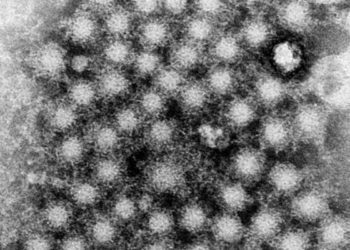Expanded screening and new treatments may reduce hepatitis C burden
1. Model-based predictions suggest that HCV infection could become a rare disease within the next 22 years in the United States if screening is expanded and if new therapies such as direct-acting antivirals (DAA) are made more available.
Study Rundown: Chronic hepatitis C virus (HCV) infection represents the leading cause of liver disease and hepatocellular carcinoma (HCC) in the United States. Recent advances in pharmacology, including the release of DAA in 2011 and the first all-oral regimen, have opened the door to new treatment approaches for HCV. In 2013, the U.S. Preventive Services Task Force (USPSTF) broadened its recommendation for HCV screening to include 1-time testing of anyone born between 1945 and 1965. It is expected that the continued launch of DAA therapies and new screening guidelines will lead to a substantial reduction in the burden of HCV infection. Previous studies have addressed the impact of old standard of care therapies and merely examined the cost-effectiveness of enhanced screening, without addressing future burden of care. This study developed a model to project the burden of HCV infection in the United States with consideration of the combined effect of recent therapeutic advances, increases to treatment capacity, and implementation of 1-time birth cohort screening versus universal screening.
Limitations to the model include possible underestimation of prevalence as NHANES data from 1999-2002 does not account for institutionalized populations, underestimation of patients receiving treatment as studies of treatment percentage were based on prescriptions reported by insurance companies, and a lack of accounting for disease modifiers such as co-infection or alcohol consumption which can impact disease progression. Furthermore, the long term efficacy and toxicity of the new DAA drugs is currently unknown. The authors conclude that while current screening practices and therapeutic approaches will decrease the burden of HCV infection, there exists the potential to further reduce burden with more aggressive screening and by increasing capacity for providing new therapies. The Affordable Care Act represents an opportunity to address the impact of HCV by providing a means to increase awareness and treatment for previously underserved populations. However, high prices of new treatments pose a barrier to the synergistic impact that expanded screening and advanced therapies are predicted to have by this study.
Click to read the study, published today in Annals of Internal Medicine
Relevant Reading: USPSTF Recommendation Statement on Screening for Hepatitis C
In-Depth: This study projected the prevalence and incidence of HCV infection as well as subsequent progression to stages of fibrosis, advanced disease, HCC, transplantation, and liver-related death through the use of an individual-level state-transition model. The study used nationally representative data for HCV distribution from the National Health and Nutrition Examination Survey (NHANES), published clinical studies, and annual infection reports from the Centers for Disease Control and Prevention to formulate infection and progression rates for the models. Based on the model, cases of chronic HCV infection in the United States have dropped from 3.2 million to 2.3 million from 2001 to 2013. It is expected that 1-time birth-cohort screening implemented in 2013 would identify 487,000 cases of HCV infection over a period of 10 years while 1-time universal screening would identify 933,700 cases. The study projected that continued implementation of current birth cohort screening and gradual adoption of new therapies as they become available could lead to HCV becoming a rare disease (defined as around 1 in 1500 or less) by the year 2036. In comparison, an ideal situation of universal screening and increased availability of new therapies without constraints could lead to HCV being classified as a rare disease by 2026, 10 years sooner than with current practices.
Image: PD
©2012-2014 2minutemedicine.com. All rights reserved. No works may be reproduced without expressed written consent from 2minutemedicine.com. Disclaimer: We present factual information directly from peer reviewed medical journals. No post should be construed as medical advice and is not intended as such by the authors, editors, staff or by 2minutemedicine.com. PLEASE SEE A HEALTHCARE PROVIDER IN YOUR AREA IF YOU SEEK MEDICAL ADVICE OF ANY SORT.






